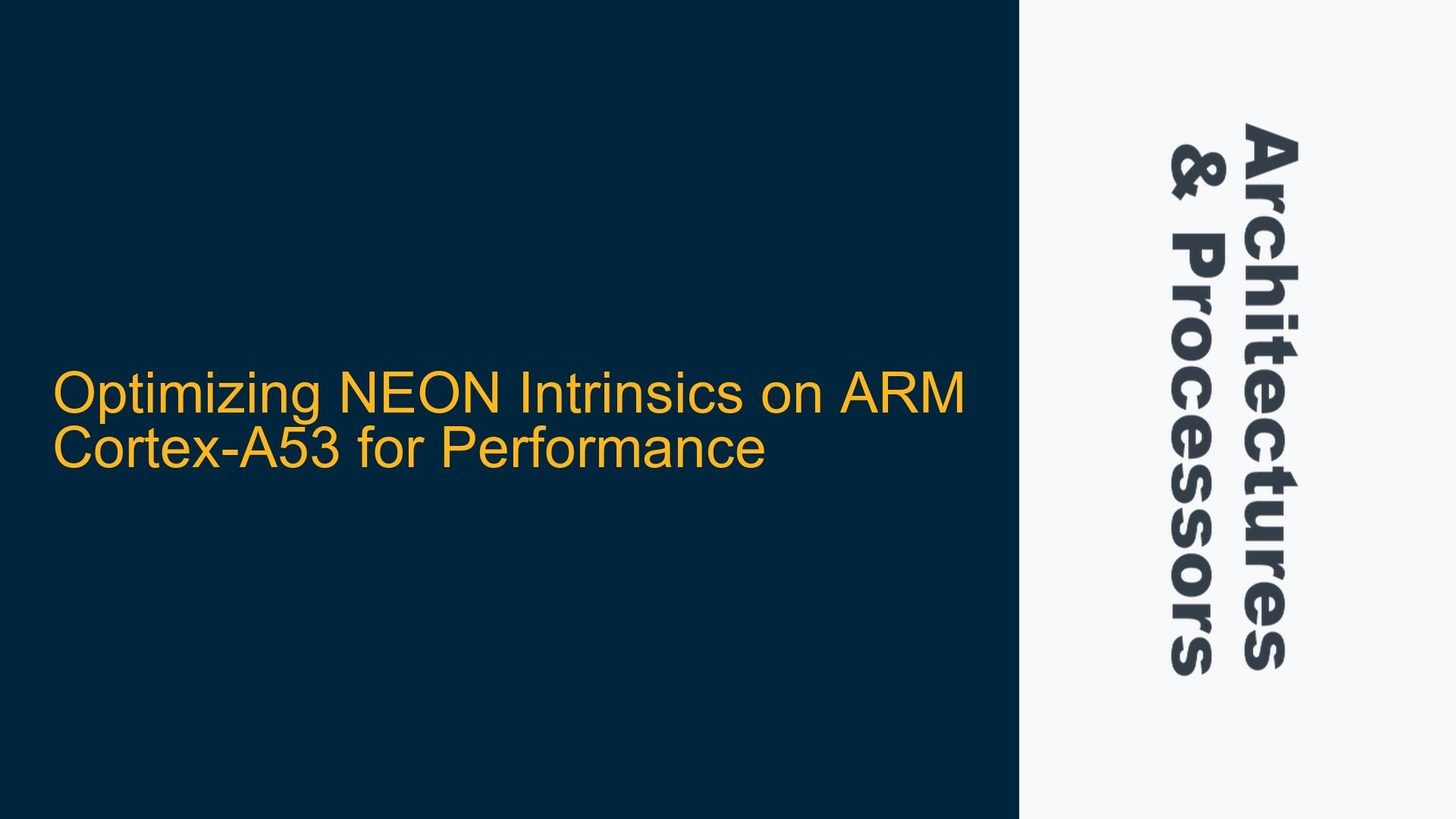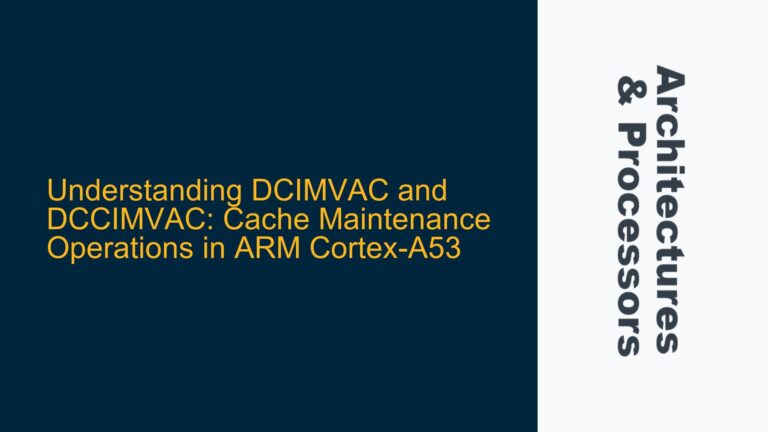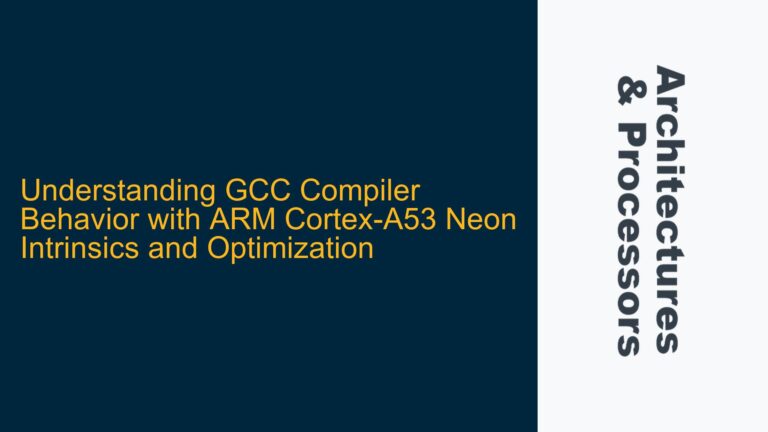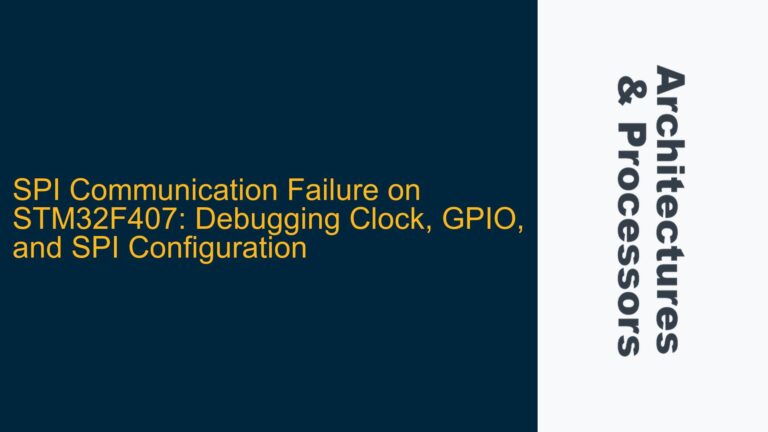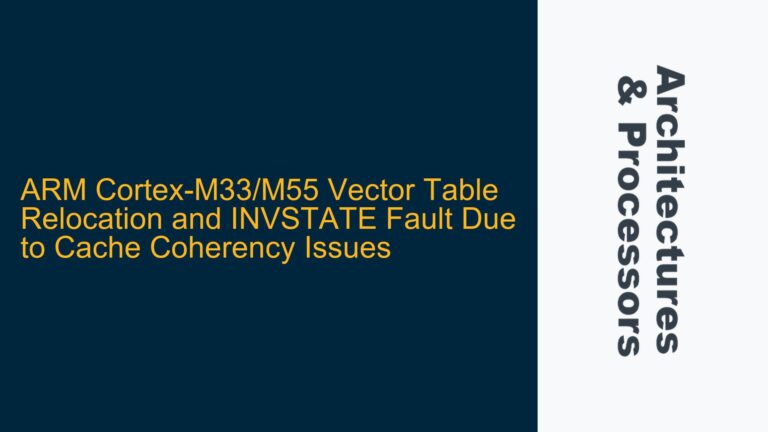NEON Intrinsics Performance Bottlenecks in ARM Cortex-A53
The ARM Cortex-A53 is a widely used processor core in embedded systems, known for its power efficiency and performance in mid-range applications. When optimizing code for the Cortex-A53, particularly when using NEON intrinsics for SIMD (Single Instruction, Multiple Data) operations, developers often encounter performance bottlenecks that are not immediately obvious. These bottlenecks can arise from a variety of factors, including inefficient use of the NEON unit, suboptimal memory access patterns, and improper handling of cache behavior.
In the context of the provided code, the primary issue revolves around the optimization of NEON intrinsics for a function that performs complex mathematical operations, including vector multiplication, addition, and logarithmic calculations. The function is designed to process a set of floating-point data using NEON intrinsics, but the performance gains from using SIMD operations are not as significant as expected. The code has already undergone some optimizations, such as loop unrolling and the use of a lookup table for logarithmic calculations, but further improvements are needed to achieve the desired performance.
The Cortex-A53’s NEON unit is capable of processing multiple data elements in parallel, but this capability is only fully realized when the data is properly aligned in memory and the instructions are scheduled efficiently. Additionally, the Cortex-A53’s cache architecture plays a crucial role in determining the overall performance of NEON-intensive code. If the data is not properly cached or if there are frequent cache misses, the performance gains from using NEON intrinsics can be negated by the overhead of memory access.
Cache Behavior and Memory Access Patterns in NEON Optimization
One of the most critical factors affecting the performance of NEON intrinsics on the Cortex-A53 is the behavior of the cache and the memory access patterns used in the code. The Cortex-A53 features a multi-level cache hierarchy, including L1 and L2 caches, which are designed to reduce the latency of memory access. However, if the data being processed by the NEON unit is not properly cached, the processor may experience frequent cache misses, leading to increased latency and reduced performance.
In the provided code, the function processes a set of floating-point data stored in arrays. The data is accessed in a sequential manner, which should, in theory, benefit from spatial locality and result in efficient cache usage. However, the performance measurements indicate that the cache behavior is not optimal, as the execution time of the function is still higher than expected. This suggests that there may be issues with the way the data is being loaded into the cache or with the timing of the cache preloading.
Cache preloading is a technique used to reduce the latency of memory access by loading data into the cache before it is needed by the processor. In the context of NEON intrinsics, cache preloading can be particularly beneficial, as it allows the NEON unit to access the data without waiting for it to be fetched from main memory. However, implementing cache preloading requires a deep understanding of the Cortex-A53’s cache architecture and the memory access patterns of the code.
Another potential issue is the use of the vaddvq_f32 intrinsic, which performs a horizontal addition of the elements in a NEON vector. This operation can be relatively expensive in terms of clock cycles, especially if it is performed repeatedly within a loop. The horizontal addition operation may also interfere with the efficient scheduling of other NEON instructions, leading to suboptimal performance.
Implementing Cache Preloading and Optimizing NEON Intrinsics
To address the performance bottlenecks in the provided code, several optimizations can be implemented, focusing on cache preloading, efficient use of NEON intrinsics, and proper scheduling of instructions. The following steps outline a detailed approach to optimizing the code for better performance on the ARM Cortex-A53.
Cache Preloading with ARM Cortex-A53
Cache preloading can be implemented using the PLD (Preload Data) instruction, which is available in the ARMv8-A architecture. The PLD instruction allows the programmer to hint to the memory subsystem that a particular memory address will be accessed soon, prompting the cache to load the data in advance. This can significantly reduce the latency of memory access, especially in loops where the same data is accessed repeatedly.
In the context of the provided code, cache preloading can be applied to the arrays inputData_real, inputData_imag, a_imagvalue, a_realvalue, b_imagvalue, and b_realvalue. By preloading these arrays into the cache before they are accessed by the NEON unit, the processor can avoid the overhead of fetching the data from main memory, resulting in faster execution times.
The PLD instruction can be inserted into the code using inline assembly or through compiler intrinsics. For example, the following code snippet demonstrates how to use the __pld intrinsic to preload data into the cache:
#include <arm_acle.h>
static inline void func(float32x4x4_t inputData_real, float *outputs) {
float32x4x4_t outputData;
float32x4x4_t outputData1;
for (unsigned short i = 0; i < 4; i++) {
// Preload data into the cache
__pld(&inputData_real.val[i]);
__pld(&inputData_imag.val[i]);
__pld(&a_imagvalue[i]);
__pld(&a_realvalue[i]);
__pld(&b_imagvalue[i]);
__pld(&b_realvalue[i]);
outputData.val[i] = vmulq_f32(inputData_real.val[i], inputData_real.val[i]);
outputData1.val[i] = vmlaq_f32(outputData.val[i], inputData_imag.val[i], inputData_imag.val[i]);
outputs[i] = 10.0F * log10f_c(vaddvq_f32(outputData1.val[i]) + (a_imagvalue[i] * b_imagvalue[i])
+ (a_realvalue[i] * b_realvalue[i])) - 7.89865767467723F;
}
}
In this example, the __pld intrinsic is used to preload the data for each iteration of the loop. This ensures that the data is available in the cache when it is needed by the NEON unit, reducing the latency of memory access and improving the overall performance of the function.
Optimizing NEON Intrinsics for Cortex-A53
In addition to cache preloading, the performance of the NEON intrinsics can be further optimized by ensuring that the instructions are scheduled efficiently and that the data is properly aligned in memory. The Cortex-A53’s NEON unit is capable of processing multiple data elements in parallel, but this capability is only fully realized when the instructions are scheduled in a way that maximizes the utilization of the NEON pipeline.
One common issue with NEON intrinsics is the use of horizontal operations, such as vaddvq_f32, which can disrupt the flow of data through the NEON pipeline. To mitigate this, it is often beneficial to minimize the use of horizontal operations and instead focus on vertical operations that process multiple elements in parallel. In the provided code, the vaddvq_f32 intrinsic is used to sum the elements of a NEON vector, which can be relatively expensive in terms of clock cycles. To optimize this operation, the horizontal addition can be replaced with a series of vertical additions that accumulate the results in a more efficient manner.
For example, the following code snippet demonstrates how to replace the vaddvq_f32 intrinsic with a series of vertical additions:
static inline void func(float32x4x4_t inputData_real, float *outputs) {
float32x4x4_t outputData;
float32x4x4_t outputData1;
float32x4_t sum = vmovq_n_f32(0.0F);
for (unsigned short i = 0; i < 4; i++) {
// Preload data into the cache
__pld(&inputData_real.val[i]);
__pld(&inputData_imag.val[i]);
__pld(&a_imagvalue[i]);
__pld(&a_realvalue[i]);
__pld(&b_imagvalue[i]);
__pld(&b_realvalue[i]);
outputData.val[i] = vmulq_f32(inputData_real.val[i], inputData_real.val[i]);
outputData1.val[i] = vmlaq_f32(outputData.val[i], inputData_imag.val[i], inputData_imag.val[i]);
// Accumulate the sum vertically
sum = vaddq_f32(sum, outputData1.val[i]);
}
// Perform the final horizontal addition
float32x2_t sum_low = vget_low_f32(sum);
float32x2_t sum_high = vget_high_f32(sum);
float32x2_t final_sum = vpadd_f32(sum_low, sum_high);
float total_sum = vget_lane_f32(final_sum, 0) + vget_lane_f32(final_sum, 1);
for (unsigned short i = 0; i < 4; i++) {
outputs[i] = 10.0F * log10f_c(total_sum + (a_imagvalue[i] * b_imagvalue[i])
+ (a_realvalue[i] * b_realvalue[i])) - 7.89865767467723F;
}
}
In this example, the vaddvq_f32 intrinsic is replaced with a series of vertical additions that accumulate the results in a NEON vector. The final horizontal addition is performed outside the loop, reducing the overhead of the horizontal operation and improving the overall performance of the function.
Proper Scheduling of NEON Instructions
Another important aspect of optimizing NEON intrinsics is the proper scheduling of instructions to maximize the utilization of the NEON pipeline. The Cortex-A53’s NEON unit is capable of processing multiple instructions in parallel, but this requires careful scheduling to avoid pipeline stalls and ensure that the NEON unit is fully utilized.
In the provided code, the NEON instructions are executed sequentially within the loop, which may not fully utilize the NEON pipeline. To optimize the scheduling of NEON instructions, it is often beneficial to interleave multiple operations within the loop, allowing the NEON unit to process multiple instructions in parallel.
For example, the following code snippet demonstrates how to interleave multiple NEON operations within the loop to improve the utilization of the NEON pipeline:
static inline void func(float32x4x4_t inputData_real, float *outputs) {
float32x4x4_t outputData;
float32x4x4_t outputData1;
float32x4_t sum = vmovq_n_f32(0.0F);
for (unsigned short i = 0; i < 4; i++) {
// Preload data into the cache
__pld(&inputData_real.val[i]);
__pld(&inputData_imag.val[i]);
__pld(&a_imagvalue[i]);
__pld(&a_realvalue[i]);
__pld(&b_imagvalue[i]);
__pld(&b_realvalue[i]);
// Interleave multiple NEON operations
float32x4_t real_squared = vmulq_f32(inputData_real.val[i], inputData_real.val[i]);
float32x4_t imag_squared = vmulq_f32(inputData_imag.val[i], inputData_imag.val[i]);
outputData1.val[i] = vmlaq_f32(real_squared, inputData_imag.val[i], inputData_imag.val[i]);
// Accumulate the sum vertically
sum = vaddq_f32(sum, outputData1.val[i]);
}
// Perform the final horizontal addition
float32x2_t sum_low = vget_low_f32(sum);
float32x2_t sum_high = vget_high_f32(sum);
float32x2_t final_sum = vpadd_f32(sum_low, sum_high);
float total_sum = vget_lane_f32(final_sum, 0) + vget_lane_f32(final_sum, 1);
for (unsigned short i = 0; i < 4; i++) {
outputs[i] = 10.0F * log10f_c(total_sum + (a_imagvalue[i] * b_imagvalue[i])
+ (a_realvalue[i] * b_realvalue[i])) - 7.89865767467723F;
}
}
In this example, the NEON operations are interleaved within the loop, allowing the NEON unit to process multiple instructions in parallel. This approach maximizes the utilization of the NEON pipeline and improves the overall performance of the function.
Conclusion
Optimizing NEON intrinsics on the ARM Cortex-A53 requires a deep understanding of the processor’s architecture, cache behavior, and memory access patterns. By implementing cache preloading, optimizing the use of NEON intrinsics, and properly scheduling instructions, developers can achieve significant performance improvements in their code. The techniques outlined in this guide provide a comprehensive approach to optimizing NEON-intensive code for the Cortex-A53, ensuring that the full potential of the NEON unit is realized.
